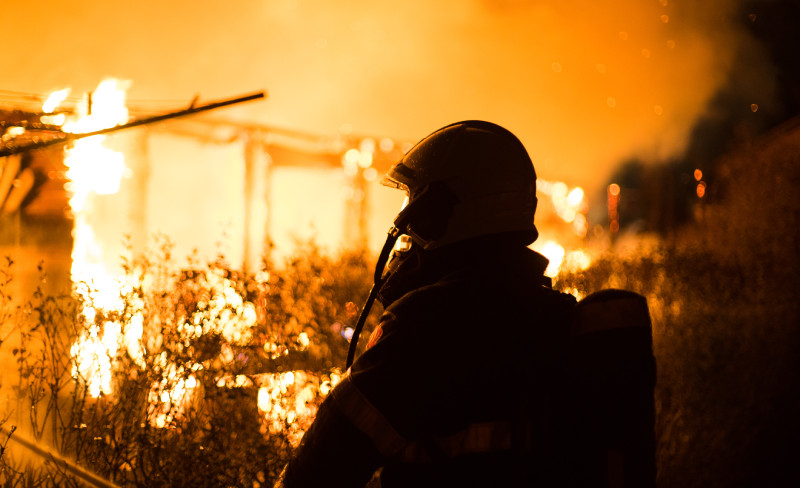News
Vegetation: An Ally Against Fires
Plants, grass, and trees provide well-being in your garden

In recent years, rising temperatures and the increasing frequency of heatwaves have led many households to seek ways to protect themselves from the harmful effects of extreme weather. One of the most effective and natural solutions to address this issue is maintaining a well-kept garden with plants, grass, and trees. These green elements not only beautify outdoor spaces but also offer substantial benefits for the well-being and safety of residents.
[Cooling the environment and creating a space to breathe.]
Plants and trees act as true oases of coolness during hot months. Through the process of transpiration, plants release water vapor into the air, helping to reduce ambient temperature. This function is especially valuable during heatwaves, as it can lower the temperature around the house by 2 to 4 degrees Celsius. Moreover, grass also has a cooling effect, absorbing solar radiation that would otherwise heat paved surfaces.
Trees, with their shade, directly reduce the amount of heat reaching walls and windows, keeping the interior of the home cooler and reducing the need for air conditioning systems. This not only positively impacts energy bills but also helps reduce greenhouse gas emissions.
Green refuge in fire-prone times
In addition to their cooling effect, certain plants and trees can offer protection against fires. One of the key features of fire-resistant plants is their ability to retain water. Plants like succulents, which store water in their leaves, stems, and roots, have a very high moisture content. This moisture acts as a natural barrier against fire since moist plants are harder to ignite and can slow the spread of flames.
Other plants have leaves, stems, or bark that are less prone to burning. For example, broadleaf trees such as oak and chestnut typically have wetter leaves and fewer flammable resins compared to trees like pines, which have high resin content that is highly flammable. This makes broadleaf trees a better choice for fire protection.
Some plants have structures that produce little dry matter, which is the main fuel for fires. For example, plants with broad, soft leaves that fall and decompose quickly do not leave a buildup of dry, flammable material on the ground. This reduces the amount of fuel available for a fire.
Certain species of plants have deep roots that allow them to access underground water reserves. These plants can maintain high moisture levels even during drought periods, making them less susceptible to fires. Plants with deep roots also tend to stabilize the soil and reduce erosion, which can help control the spread of fire.
The strategic placement of certain plants can create natural firebreaks. For example, planting a row of broadleaf trees with high moisture content around a property can act as an effective defense against advancing flames. These natural barriers can interrupt the path of fire and protect nearby structures.
It’s important to note that some invasive plants can increase the risk of fire because they grow quickly and leave behind a lot of dry biomass. Proper garden management, removing these invasive species and replacing them with safer plants, is key to fire prevention.
Finally, choosing plants well-adapted to the local climate can improve fire resistance. Native plants are often better equipped to handle the environmental conditions of their region, including extreme temperatures and drought. These plants have natural mechanisms to survive local conditions, making them less vulnerable to fires.
Additionally, maintaining a well-watered lawn and plants with high moisture content can prevent fire from spreading rapidly toward the home. Gardens designed with these considerations can be a crucial line of defense in regions prone to wildfires. However, it’s important to keep in mind water and safety restrictions put in place for everyone’s protection.
[Vegetation is a source of life, protection, and comfort.]
Beyond protection from heat and fire, well-maintained gardens also offer other important benefits. They improve air quality, as plants absorb carbon dioxide and release oxygen. They also act as sound barriers, reducing external noise and providing a more peaceful environment. A well-designed green space can increase property value and offer a place of rest and recreation for the family.
In conclusion, having plants, grass, and trees in your garden is much more than an aesthetic choice. It’s an investment in health, safety, and well-being that provides multiple advantages, especially in the context of climate change and extreme weather conditions. Taking care of your garden is important—managing your space could save you more than a few headaches.









